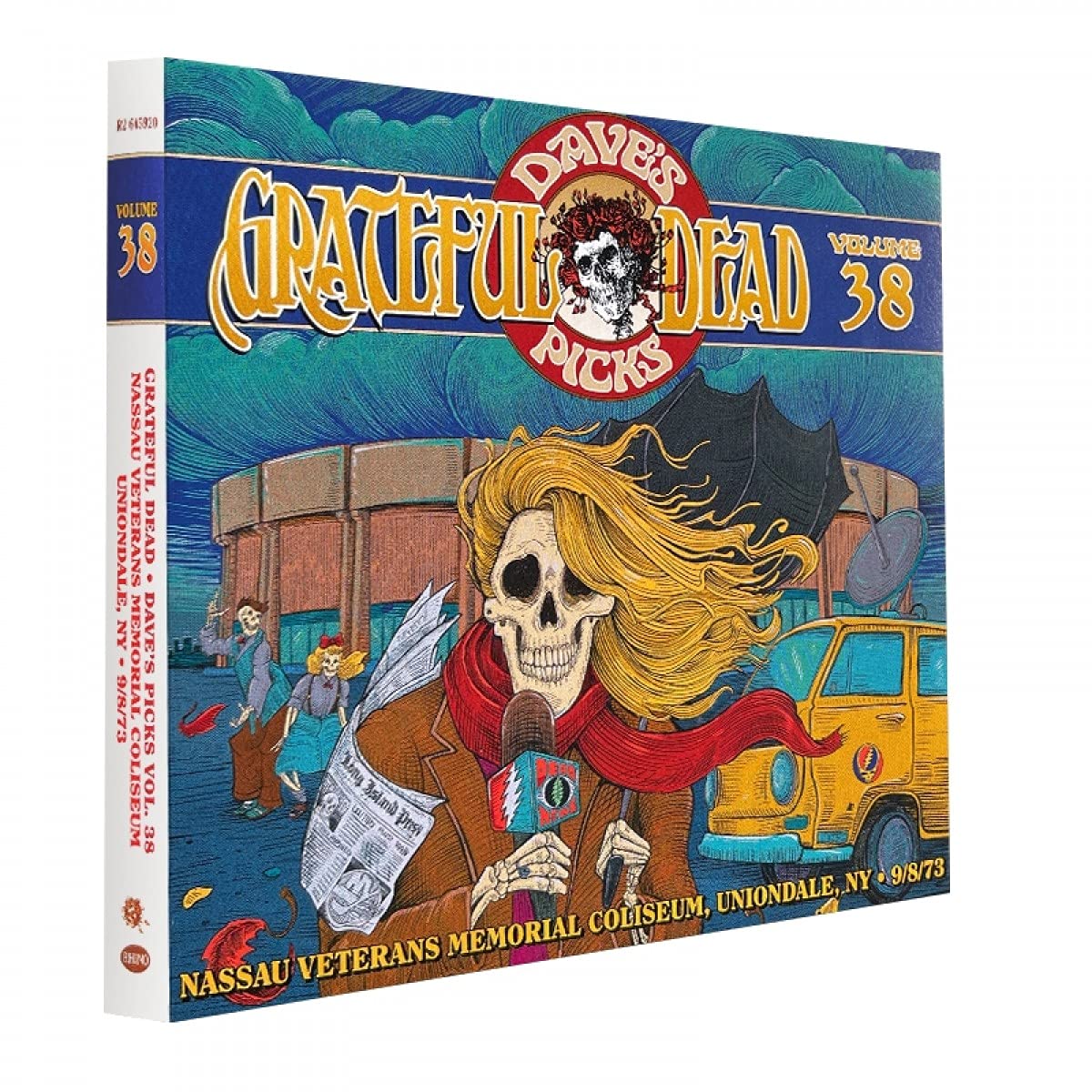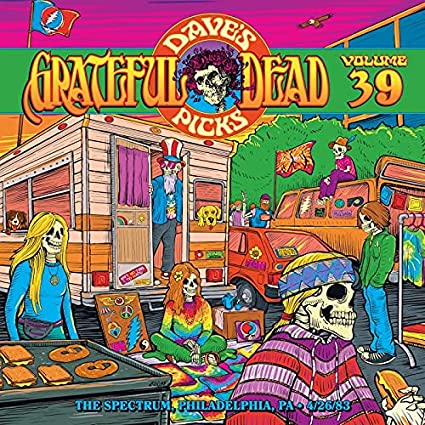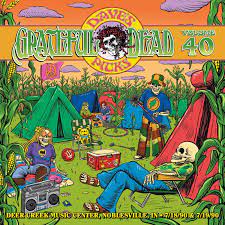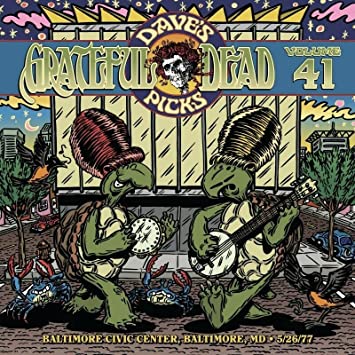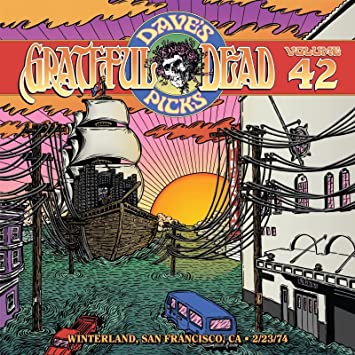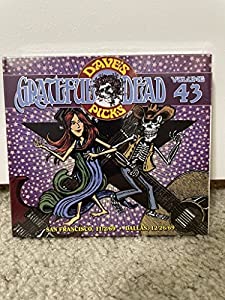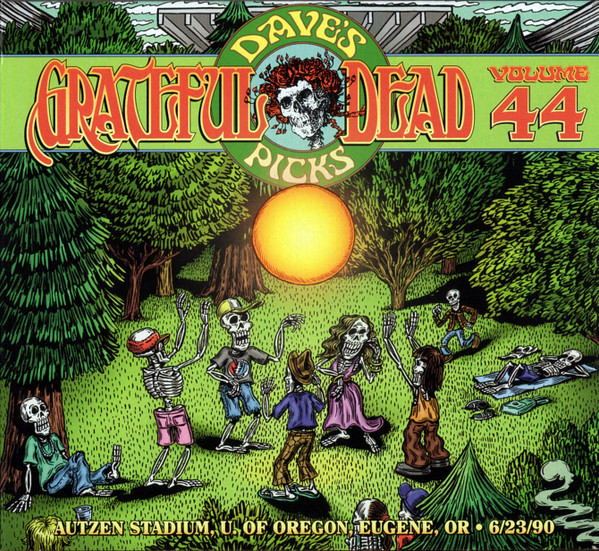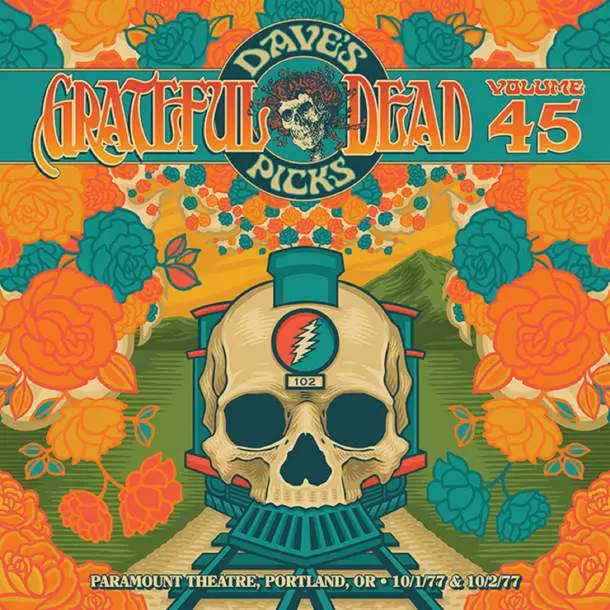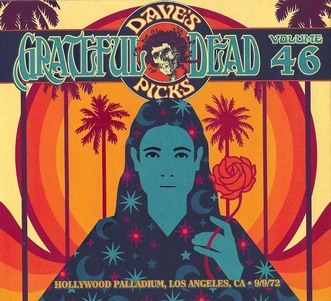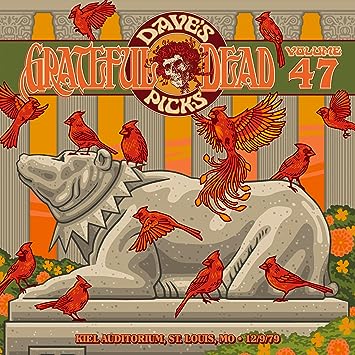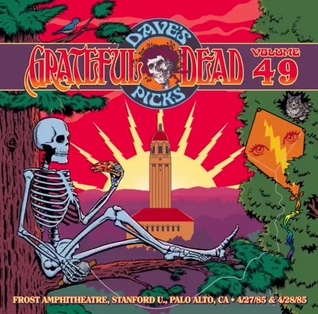Grateful Dead | |
Number of songs: 32 | Total weeks on charts: 32
Appearing in a total number of: 32 charts | Total period running: 0 days
Appearing in a total number of: 32 charts | Total period running: 0 days
Biography
The Grateful Dead was an American rock band formed in 1965 in Palo Alto, California. Ranging from quintet to septet, the band is known for its unique and eclectic style, which fused elements of rock, psychedelia, experimental music, modal jazz, country, folk, bluegrass, blues, gospel reggae, and space rock, for live performances of lengthy instrumental jams, and for their devoted fan base, known as "Deadheads". "Their music," writes Lenny Kaye, "touches on ground that most other groups don't even know exists." These various influences were distilled into a diverse and psychedelic whole that made the Grateful Dead "the pioneering Godfathers of the jam band world". The band was ranked 57th by Rolling Stone magazine in its The Greatest Artists of All Time issue. The band was inducted into the Rock and Roll Hall of Fame in 1994 and a recording of their May 8, 1977, performance at Cornell University's Barton Hall was added to the National Recording Registry of the Library of Congress in 2012. The Grateful Dead have sold more than 35 million albums worldwide.
The Grateful Dead was founded in the San Francisco Bay Area amid the rise of the counterculture of the 1960s. The founding members were Jerry Garcia (lead guitar, vocals), Bob Weir (rhythm guitar, vocals), Ron "Pigpen" McKernan (keyboards, harmonica, vocals), Phil Lesh (bass, vocals), and Bill Kreutzmann (drums). Members of the Grateful Dead had played together in various San Francisco bands, including Mother McCree's Uptown Jug Champions and the Warlocks. Lesh was the last member to join the Warlocks before they became the Grateful Dead; he replaced Dana Morgan Jr., who had played bass for a few gigs. Drummer Mickey Hart and nonperforming lyricist Robert Hunter joined in 1967. With the exception of McKernan, who died in 1973, and Hart, who took time off from 1971 to 1974, the core of the band stayed together for its entire 30-year history. The other official members of the band are Tom Constanten (keyboards; 1968–1970), John Perry Barlow (nonperforming lyricist; 1971–1995), Keith Godchaux (keyboards; 1971–1979), Donna Godchaux (vocals; 1972–1979), Brent Mydland (keyboards, vocals; 1979–1990), and Vince Welnick (keyboards, vocals; 1990–1995). Bruce Hornsby (accordion, piano, vocals) was a touring member from 1990 to 1992, as well as a guest with the band on occasion before and after the tours.
After the death of Garcia in 1995, former members of the band, along with other musicians, toured as the Other Ones in 1998, 2000, and 2002, and the Dead in 2003, 2004, and 2009. In 2015, the four surviving core members marked the band's 50th anniversary in a series of concerts that were billed as their last performances together. There have also been several spin-offs featuring one or more core members, such as Dead & Company, Furthur, the Rhythm Devils, Phil Lesh & Friends, RatDog, and Billy & the Kids.
The Grateful Dead began their career as the Warlocks, a group formed in early 1965 from the remnants of a Palo Alto, California jug band called Mother McCree's Uptown Jug Champions. The band's first show was at Magoo's Pizza located at 639 Santa Cruz Avenue in suburban Menlo Park, California, on May 5, 1965. They were initially known as the Warlocks; coincidentally, the Velvet Underground (similarly influenced by avant-garde music) was also using that name on the East Coast. The show was not recorded but the set list has been preserved. Gigging as a bar band, the group quickly changed its name after finding out that another band of the same name (not the Velvet Underground, who by then had also changed their name) had signed a recording contract. The first show under the new name Grateful Dead was in San Jose, California on December 4, 1965, at one of Ken Kesey's Acid Tests. Earlier demo tapes have survived, but the first of over 2,000 concerts known to have been recorded by the band's fans was a show at the Fillmore Auditorium in San Francisco on January 8, 1966. Later that month, the Grateful Dead played at the Trips Festival, an early psychedelic rock concert.
The name "Grateful Dead" was chosen from a dictionary. According to Phil Lesh, in his autobiography (pp. 62), "... [Jerry Garcia] picked up an old Britannica World Language Dictionary ... ... In that silvery elf-voice he said to me, 'Hey, man, how about the Grateful Dead?'" The definition there was "the soul of a dead person, or his angel, showing gratitude to someone who, as an act of charity, arranged their burial." According to Alan Trist, director of the Grateful Dead's music publisher company Ice Nine, Garcia found the name in the Funk & Wagnalls Folklore Dictionary, when his finger landed on that phrase while playing a game of Fictionary. In the Garcia biography, Captain Trips, author Sandy Troy states that the band was smoking the psychedelic DMT at the time. The term "grateful dead" appears in folktales of a variety of cultures. In mid-1969, Phil Lesh told another version of the story to Carol Maw, a young Texan visiting with the band in Marin County who also ended up going on the road with them to the Fillmore East and Woodstock. In this version, Phil said, "Jerry found the name spontaneously when he picked up a dictionary and the pages fell open. The words 'grateful' and 'dead' appeared straight opposite each other across the crack between the pages in unrelated text."
Other supporting personnel who signed on early included Rock Scully, who heard of the band from Kesey and signed on as manager after meeting them at the Big Beat Acid Test; Stewart Brand, "with his side show of taped music and slides of Indian life, a multimedia presentation" at the Big Beat and then, expanded, at the Trips Festival; and Owsley Stanley, the "Acid King" whose LSD supplied the tests and who, in early 1966, became the band's financial backer, renting them a house on the fringes of Watts and buying them sound equipment. "We were living solely off of Owsley's good graces at that time. ... trip was he wanted to design equipment for us, and we were going to have to be in sort of a lab situation for him to do it," said Garcia.
One of the group's earliest major performances in 1967 was the Mantra-Rock Dance—a musical event held on January 29, 1967, at the Avalon Ballroom by the San Francisco Hare Krishna temple. The Grateful Dead performed at the event along with the Hare Krishna founder Bhaktivedanta Swami, poet Allen Ginsberg, bands Moby Grape and Big Brother and the Holding Company with Janis Joplin, donating proceeds to the Krishna temple. The band's first LP, The Grateful Dead, was released on Warner Brothers in 1967.
Classically trained trumpeter Phil Lesh performed on bass guitar. Bob Weir, the youngest original member of the group, played rhythm guitar. Ron "Pigpen" McKernan played keyboards and harmonica until shortly before his death in 1973 at the age of 27. Garcia, Weir, and McKernan shared the lead vocal duties more or less equally; Lesh only sang a few leads, but his tenor was a key part of the band's three-part vocal harmonies. Bill Kreutzmann played drums, and in September 1967 was joined by a second drummer, New York native Mickey Hart, who also played a wide variety of other percussion instruments.
1970 included tour dates in New Orleans, Louisiana, where the band performed at The Warehouse for two nights. On January 31, 1970, the local police raided their hotel on Bourbon Street, and arrested and charged a total of 19 people with possession of various drugs. The second night's concert was performed as scheduled after bail was posted. Eventually, the charges were dismissed, except those against sound engineer Owsley Stanley, who was already facing charges in California for manufacturing LSD. This event was later memorialized in the lyrics of the song "Truckin'", a single from American Beauty which reached number 64 on the charts.
Mickey Hart took time off from the Grateful Dead beginning in February 1971, leaving Kreutzmann once again as the sole percussionist. Hart rejoined the Grateful Dead for good in October 1974. Tom "TC" Constanten was added as a second keyboardist from 1968 to 1970, while Pigpen also played various percussion instruments and sang.
After Constanten's departure, Pigpen reclaimed his position as sole keyboardist. Less than two years later, in late 1971, Pigpen was joined by another keyboardist, Keith Godchaux, who played grand piano alongside Pigpen's Hammond B-3 organ. In early 1972, Keith's wife, Donna Jean Godchaux, joined the Grateful Dead as a backing vocalist.
Following the Grateful Dead's "Europe '72" tour, Pigpen's health had deteriorated to the point that he could no longer tour with the band. His final concert appearance was June 17, 1972, at the Hollywood Bowl, in Los Angeles; he died in March 1973 of complications from liver damage.
The death of Pigpen did not slow the band down, and they continued with their new members. They soon formed their own record group, Grateful Dead Records. Later that year, they released their next studio album, the jazz-influenced Wake of the Flood. It became their biggest commercial success thus far. Meanwhile, capitalizing on Flood’s success, the band soon went back to the studio, and the next year, 1974, released another album, From the Mars Hotel. Not long after that album’s release however, the Dead decided to take a hiatus from live touring.
In September 1975, the Dead released their eighth studio album, Blues for Allah. Their hiatus was short-lived, though, as they resumed touring in June 1976. That same year, they signed with Arista Records. Their new contract soon produced Terrapin Station in 1977. The band's tour in the spring of that year is held in high regard by their fans, and their concert of May 8 at Cornell University in Ithaca, New York is often considered to be one of the best performances of their career.
Although things appeared to be going well for the band, problems were arising with their two newest members, Keith and Donna Jean Godchaux. The pair were frequently fighting, and Keith's heroin addiction was affecting his playing. Both of these issues were causing complications with touring, and they agreed to leave the band in February 1979.
Following the departure of the Godchauxs, Brent Mydland joined as keyboardist and vocalist and was considered "the perfect fit". The Godchauxs then formed the Heart of Gold Band before Keith died in a car accident in 1980. Mydland was the keyboardist for the Grateful Dead for 11 years until his death by narcotics overdose in July 1990, becoming the third keyboardist to die.
During the 1980s the band transformed as the talents of Mydland helped power the group. Shortly after Mydland found his place in the early 1980s, Garcia's health began to decline. His drug habits caused him to lose his liveliness on stage. After beginning to curtail his opiate usage in 1985 gradually, Garcia slipped into a diabetic coma for several days in July 1986. After he recovered, the band released In the Dark in July 1987, which resulted as their best selling studio album release, and also produced their only top-10 chart single, "Touch of Grey". Also that year, the group toured with Bob Dylan, as documented on the album Dylan & the Dead.
Inspired by Garcia's improved health and a successful album, the band's energy and chemistry peaked in the late 1980s and 1990. Performances were vigorous, and as a result, every show exceeded its maximum audience capacity. The band's "high time" came to a sudden halt when Mydland died after the summer tour in 1990. They now had to rebuild; Vince Welnick, former keyboardist for the Tubes, joined as a band member, while Bruce Hornsby, who had a successful career with his band the Range, joined as a touring member. Both performed on keyboards and vocals - Welnick until the band's end, and Hornsby mainly from 1990 to 1992.
Jerry Garcia died in August 1995 and the remaining band members decided to disband. Since that time, there have been a number of reunions by the surviving members involving various combinations of musicians. Additionally, the former members have also begun or continued their individual projects.
In 1998, Bob Weir, Phil Lesh, and Mickey Hart, along with several other musicians, formed a band called the Other Ones, and performed a number of concerts that year, releasing a live album, The Strange Remain, the following year. In 2000, the Other Ones toured again, this time with Kreutzmann but without Lesh. After taking another year off, the band toured again in 2002 with Lesh. That year, the Other Ones then included all four living former Grateful Dead members who had been in the band for most or all of its history. At different times the shifting lineup of the Other Ones also included guitarists Mark Karan, Steve Kimock, and Jimmy Herring, keyboardists Bruce Hornsby, Jeff Chimenti, and Rob Barraco, saxophonist Dave Ellis, drummer John Molo, bassist Alphonso Johnson, and vocalist Susan Tedeschi.
In 2003, the Other Ones, still including Weir, Lesh, Hart, and Kreutzmann, changed their name to the Dead. The Dead toured the United States in 2003, 2004 and 2009. The band's lineups included Jimmy Herring and Warren Haynes on guitar, Jeff Chimenti and Rob Barraco on keyboards, and Joan Osborne on vocals. In 2008, members of the Dead played two concerts, called "Deadheads for Obama" and "Change Rocks".
Following the 2009 Dead tour, Lesh and Weir formed the band Furthur, which debuted in September 2009. Joining Lesh and Weir in Furthur were John Kadlecik (guitar), Jeff Chimenti (keyboards), Joe Russo (drums), Jay Lane (drums), Sunshine Becker (vocals), and Zoe Ellis (vocals). Lane and Ellis left the band in 2010, and vocalist Jeff Pehrson joined later that year. Furthur disbanded in 2014.
In 2010, Hart and Kreutzmann re-formed the Rhythm Devils, and played a summer concert tour.
Since 1995, the former members of the Grateful Dead have also pursued solo music careers. Both Bob Weir & RatDog and Phil Lesh and Friends have performed many concerts and released several albums. Mickey Hart and Bill Kreutzmann have also each released a few albums. Hart has toured with his world music percussion ensemble Planet Drum as well as the Mickey Hart Band. Kreutzmann has led several different bands, including BK3, 7 Walkers (with Papa Mali), and Billy & the Kids. Donna Godchaux has returned to the music scene, with the Donna Jean Godchaux Band, and Tom Constanten also continues to write and perform music. All of these groups continue to play Grateful Dead music.
In October 2014, it was announced that Martin Scorsese will produce a documentary film about the Grateful Dead, to be directed by Amir Bar-Lev. David Lemieux will supervise the musical selection, and Weir, Hart, Kreutzmann and Lesh have agreed to new interviews for the film. Bar-Lev's four-hour documentary, titled Long Strange Trip, was released in 2017.
In 2015, Weir, Lesh, Kreutzmann, and Hart reunited for five concerts called "Fare Thee Well: Celebrating 50 Years of the Grateful Dead". The shows were performed on June 27 and 28 at Levi's Stadium in Santa Clara, California, and on July 3, 4 and 5 at Soldier Field in Chicago, Illinois. The band stated that this would be the final time that Weir, Lesh, Hart, and Kreutzmann would perform together. They were joined by Trey Anastasio of Phish on guitar, Jeff Chimenti on keyboards, and Bruce Hornsby on piano. Demand for tickets was very high. The concerts were simulcast via various media. The Chicago shows have been released as a box set of CDs and DVDs.
In the fall of 2015, Mickey Hart, Bill Kreutzmann and Bob Weir joined with guitarist John Mayer, keyboardist Jeff Chimenti, and bassist Oteil Burbridge to tour in a band called Dead & Company. Mayer recounts that in 2011 he was listening to Pandora and happened upon the Grateful Dead song "Althea", and that soon Grateful Dead music was all he would listen to. The band has played three tours, and is currently embarking on a fourth: October–December 2015, June–July 2016, and May–July 2017.. Fall tour was shortly announced after summer 2017. Nov-Dec 2017.
The Grateful Dead formed during the era when bands such as the Beatles, the Beach Boys and the Rolling Stones were dominating the airwaves. "The Beatles were why we turned from a jug band into a rock 'n' roll band," said Bob Weir. "What we saw them doing was impossibly attractive. I couldn't think of anything else more worth doing." Former folk-scene star Bob Dylan had recently put out a couple of records featuring electric instrumentation. Grateful Dead members have said that it was after attending a concert by the touring New York City band the Lovin' Spoonful that they decided to "go electric" and look for a dirtier sound. Jerry Garcia and Bob Weir (each of whom had been immersed in the American folk music revival of the late 1950s and early 1960s), were open-minded to electric guitars.
The Grateful Dead's early music (in the mid-1960s) was part of the process of establishing what "psychedelic music" was, but theirs was essentially a "street party" form of it. They developed their "psychedelic" playing as a result of meeting Ken Kesey in Palo Alto, California, and subsequently becoming the house band for the Acid Tests he staged. They did not fit their music to an established category such as pop rock, blues, folk rock, or country & western. Individual tunes within their repertoire could be identified under one of these stylistic labels, but overall their music drew on all of these genres and, more frequently, melded several of them. Bill Graham said of the Grateful Dead, "They're not the best at what they do, they're the only ones that do what they do." Often (both in performance and on recording) the Dead left room for exploratory, spacey soundscapes.
Their live shows, fed by an improvisational approach to music, were different from most touring bands. While rock and roll bands often rehearse a standard set, played with minor variations, the Grateful Dead did not prepare in this way. Garcia stated in a 1966 interview, "We don't make up our sets beforehand. We'd rather work off the tops of our heads than off a piece of paper." They maintained this approach throughout their career. For each performance, the band drew material from an active list of a hundred or so songs.
The 1969 live album Live/Dead did capture the band in-form, but commercial success did not come until Workingman's Dead and American Beauty, both released in 1970. These records largely featured the band's laid-back acoustic musicianship and more traditional song structures. With their rootsy, eclectic stylings, particularly evident on the latter two albums, the band pioneered the hybrid Americana genre.
As the band and its sound matured over thirty years of touring, playing, and recording, each member's stylistic contribution became more defined, consistent, and identifiable. Lesh, who was originally a classically trained trumpet player with an extensive background in music theory, did not tend to play traditional blues-based bass forms, but more melodic, symphonic and complex lines, often sounding like a second lead guitar. Weir, too, was not a traditional rhythm guitarist, but tended to play jazz-influenced, unique inversions at the upper end of the Dead's sound. The two drummers, Mickey Hart and Kreutzmann, developed a unique, complex interplay, balancing Kreutzmann's steady beat with Hart's interest in percussion styles outside the rock tradition. Hart incorporated an 11-count measure to his drumming, bringing a dimension to the band's sound that became an important part of its style. Garcia's lead lines were fluid, supple and spare, owing a great deal of their character to his training in fingerpicking and banjo.
The band's primary lyricists, Robert Hunter and John Perry Barlow, commonly used themes involving love and loss, life and death, gambling and murder, beauty and horror, chaos and order, God and other religious themes, travelling and touring. In a retrospective, The New Yorker described Hunter's verses as "elliptical, by turns vivid and gnomic", which were often "hippie poetry about roses and bells and dew," and critic Robert Christgau described them as "American myths" that later gave way to "the old karma-go-round".
Hal Kant was an entertainment industry attorney who specialized in representing musical groups. He spent 35 years as principal lawyer and general counsel for the Grateful Dead, a position in the group that was so strong that his business cards with the band identified his role as "Czar".
Kant brought the band millions of dollars in revenue through his management of the band's intellectual property and merchandising rights. At Kant's recommendation, the group was one of the few rock 'n roll pioneers to retain ownership of their music masters and publishing rights.
In 2006, the Grateful Dead signed a ten-year licensing agreement with Rhino Entertainment to manage the band's business interests including the release of musical recordings, merchandising, and marketing. The band retained creative control and kept ownership of its music catalog.
A Grateful Dead video game titled Grateful Dead Game – The Epic Tour was released in April 2012 and was created by Curious Sense.
The Grateful Dead toured constantly throughout their career, playing more than 2,300 concerts. They promoted a sense of community among their fans, who became known as "Deadheads", many of whom followed their tours for months or years on end. In their early career, the band also dedicated their time and talents to their community, the Haight-Ashbury area of San Francisco, making available free food, lodging, music, and health care to all. It has been said that the band performed "more free concerts than any band in the history of music".
With the exception of 1975, when the band was on hiatus and played only four concerts together, the Grateful Dead performed many concerts every year, from their formation in April 1965, until July 9, 1995. Initially all their shows were in California, principally in the San Francisco Bay Area and in or near Los Angeles. They also performed, in 1965 and 1966, with Ken Kesey and the Merry Pranksters, as the house band for the Acid Tests. They toured nationally starting in June 1967 (their first foray to New York), with a few detours to Canada, Europe and three nights at the Great Pyramid of Giza in Egypt in 1978. They appeared at the Monterey Pop Festival in 1967, the Woodstock Festival in 1969 and the Festival Express train tour across Canada in 1970. They were scheduled to appear as the final act at the infamous Altamont Free Concert on December 6, 1969 after the Rolling Stones but withdrew after security concerns. "That's the way things went at Altamont—so badly that the Grateful Dead, prime organizers and movers of the festival, didn't even get to play," staff at Rolling Stone magazine wrote in a detailed narrative on the event"
Their first UK performance was at the Hollywood Music Festival in 1970. Their largest concert audience came in 1973 when they played, along with the Allman Brothers Band and the Band, before an estimated 600,000 people at the Summer Jam at Watkins Glen. The 1998 edition of the Guinness Book of World Records recognized them with a listing under the heading, "most rock concerts performed" (2,318 concerts). They played to an estimated total of 25 million people, more than any other band, with audiences of up to 80,000 attending a single show. Many of these concerts were preserved in the band's tape vault, and several dozen have since been released on CD and as downloads. The Dead were known for the tremendous variation in their setlists from night to night—the list of songs documented to have been played by the band exceeds 500. The band has released four concert videos under the name View from the Vault.
In the 1990s, the Grateful Dead earned a total of $285 million in revenue from their concert tours, the second-highest during the 1990s, with the Rolling Stones earning the most. This figure is representative of tour revenue through 1995, as touring stopped after the death of Jerry Garcia.
Their numerous studio albums were generally collections of new songs that they had first played in concert. The band was also famous for its extended musical jams, which featured both individual improvisations as well as distinctive "group-mind" improvisations during which each of the band members improvised individually while simultaneously blending together as a cohesive musical unit. Musically, this may be illustrated in that the band not only improvised within the form of songs, but also with the form. The Grateful Dead have often been described as having never played the same song the same way twice. The cohesive listening abilities of each band member made for a transcendence of what might be called "free form" and improvisation. Their concert sets often blended songs, one into the next (a segue).
The Wall of Sound was a large sound system designed specifically for the Grateful Dead. The band was never satisfied with the house system anywhere they played. After the Monterey Pop Festival, the band's crew 'borrowed' some of the other performers' sound equipment and used it to host some free shows in San Francisco. In their early days, soundman Owsley "Bear" Stanley designed a public address (PA) and monitor system for them. Bear was the Grateful Dead's soundman for many years; he was also one of the largest suppliers of LSD. Stanley's sound systems were delicate and finicky, and frequently brought shows to a halt with technical breakdowns. After Stanley went to jail for manufacturing LSD in 1970, the group briefly used house PAs, but found them to be even less reliable than those built by their former soundman. On February 2, 1970 the group contacted Bob Heil to use his system. In 1971, the band purchased their first solid-state sound system from Alembic Inc Studios. Because of this, Alembic would play an integral role in the research, development, and production of the Wall of Sound. The band also welcomed Dan Healy into the fold on a permanent basis that year. Healy would mix the Grateful Dead's live sound until 1993.
Like several other bands during this time, the Grateful Dead allowed their fans to record their shows. For many years the tapers set up their microphones wherever they could, and the eventual forest of microphones became a problem for the official sound crew. Eventually, this was solved by having a dedicated taping section located behind the sound board, which required a special "tapers" ticket. The band allowed sharing of tapes of their shows, as long as no profits were made on the sale of their show tapes. Sometimes the sound crew would allow the tapers to connect directly to the sound board, which created exceptional concert recordings.
Recently, there have been some disputes over which recordings archive.org could host on their site. Although all the recordings are hosted at present, the sound board recordings can only be streamed and not downloaded.
Of the approximately 2,350 shows the Grateful Dead played, almost 2,200 were taped, and most of these are available online. The band began collecting and cataloging tapes early on and Dick Latvala was their keeper. "Dick's Picks" is named after Latvala. After his death in 1999, David Lemieux gradually took the post. Concert set lists from a subset of 1,590 Grateful Dead shows were used to perform a comparative analysis between how songs were played in concert and how they are listened online by Last.fm members. In their book Marketing Lessons from the Grateful Dead: What Every Business Can Learn From the Most Iconic Band in History, David Meerman Scott and Brian Halligan identify the taper section as a crucial contributor to increasing the Grateful Dead's fan base.
In 2004, Rolling Stone ranked the Grateful Dead No. 57 on their list of the 100 Greatest Artists of All Time.
On February 10, 2007, the Grateful Dead received a Grammy Lifetime Achievement Award. The award was accepted on behalf of the band by Mickey Hart and Bill Kreutzmann.
In 2011, a recording of the Grateful Dead's May 8, 1977, concert at Cornell University's Barton Hall was selected for induction into the National Recording Registry of the Library of Congress.
Twelve members of the Grateful Dead (the eleven official performing members plus Robert Hunter) were inducted into the Rock and Roll Hall of Fame in 1994, and Bruce Hornsby was their presenter.
Lead guitarist Jerry Garcia was often viewed both by the public and the media as the leader or primary spokesperson for the Grateful Dead, but was reluctant to be perceived that way, especially since he and the other group members saw themselves as equal participants and contributors to their collective musical and creative output. Garcia, a native of San Francisco, grew up in the Excelsior District. One of his main influences was bluegrass music, and he also performed—on banjo, one of his other great instrumental loves, along with the pedal steel guitar—in bluegrass bands, notably Old and in the Way with mandolinist David Grisman.
Bruce Hornsby never officially joined the band full-time, because of his other commitments, but he did play keyboards at most Dead shows between September 1990 and March 1992, and sat in with the band over one hundred times in all between 1988 and 1995. Jerry Garcia referred to him as a "floating member" who could come and go as he pleased.
Robert Hunter and John Perry Barlow were the band's primary lyricists, starting in 1967 and 1971, respectively, and continuing until the band's dissolution. Hunter collaborated mostly with Garcia and Barlow mostly with Weir, though each wrote with other band members as well. Both are listed as official members at Dead.net, the band's website, alongside the performing members. Barlow was the only member not inducted into the Rock and Roll Hall of Fame.
Discography:
• The Grateful Dead (1967)
• Anthem of the Sun (1968)
• Aoxomoxoa (1969)
• Live/Dead (1969)
• Workingman's Dead (1970)
• American Beauty (1970)
• Grateful Dead (Skull & Roses) (1971)
• Europe '72 (1972)
• History of the Grateful Dead, Volume One (Bear's Choice) (1973)
• Wake of the Flood (1973)
• From the Mars Hotel (1974)
• Blues for Allah (1975)
• Steal Your Face (1976)
• Terrapin Station (1977)
• Shakedown Street (1978)
• Go to Heaven (1980)
• Reckoning (1981)
• Dead Set (1981)
• In the Dark (1987)
• Dylan & the Dead (1989)
• Built to Last (1989)
• Without a Net (1990)
Sources: Wikipedia, Top40-Charts.com Editorial team
Grateful Dead in the news
































